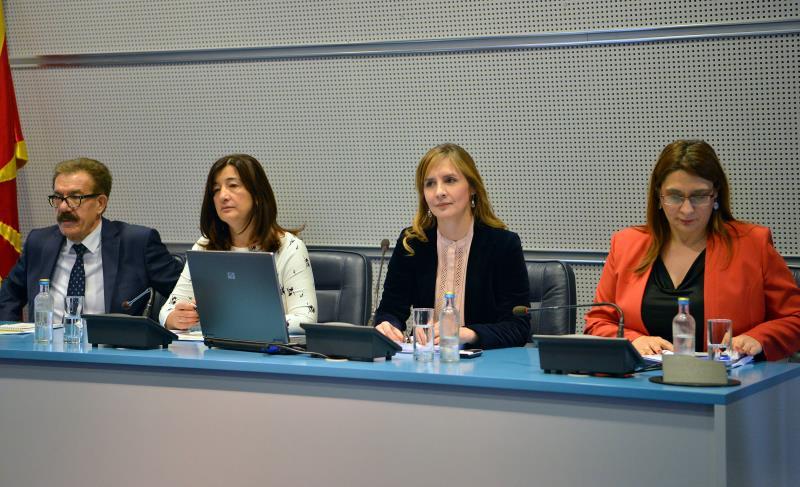Today, the National Bank Council has held a regular session, discussing and adopting the latest Quarterly Report for November 2019.
The Report also includes the latest macroeconomic forecasts of the National Bank, which assume a stable domestic environment, further inflow of foreign investment, continuation of the public investment cycle in infrastructure, as well as growth of foreign demand, albeit more moderate than in April. These forecasts again expect by 3.5% faster domestic economy this year and gradual acceleration to 3.8% in 2020 and 4% in 2021 and 2022, amid pronounced downward risks. Such growth dynamics were expected in the April forecast cycle, without any major changes to the expected sources of growth. Positive momentum for growth is still expected from the domestic demand, with further private consumption growth and investment recovery, whereas the contribution of the net exports is assessed as negative.

Regarding the future price trajectory in the domestic economy, the latest forecasts point to environment of stable prices, without major inflationary pressures. Lower performances and expectations for weaker pressures from import prices resulted in downward revision of the inflation forecast to 1% for this year and 1.5% for the next year, unlike the April forecasts for 1.5% and 2%, respectively. According to the latest observations, as in the previous forecast vintage, the growth rate of domestic prices for 2021 and 2021 is expected to be around 2%.
Concerning the external sector, the latest balance of payments assessments indicate favorable external position, without significant imbalances in the economy. Current account deficit in the period 2019-2022 is expected to be moderate and to average 1.5% of GDP, similar to the April forecast, and to be financed through both non-debt and debt flows. Foreign reserves adequacy indicators show that they have been in the safe zone throughout the forecast horizon.
Credit activity of the banking sector is still assessed as major economic growth supportive factor. Taking into account the increased credit support in the first three quarters and the expectations for its continuation by the end of the year, for 2019, the credit growth is expected to be 5.4%, i.e. around 7% if the regulatory changes are exempted. As in the April forecast, the credit growth in 2020 is expected to be about 8% annually, and to continue at the same pace in 2021-2022, on average. This year, total deposits in the financial system are expected to grow by 9.6%, and in the period 2020-2022, the average growth would be 8.5%, as in the April forecast.
Risks surrounding the macroeconomic scenario are assessed as mostly downward. Such assessments relate primarily to external risks, amidst less conducive global environment and increased global uncertainty, caused by rising trade tensions, uncertain Brexit, lingering geopolitical risks and financial markets volatility. Domestically, compared to April, there are expectations for pronounced uncertainty, but the effects, if any, would be temporary.
As highlighted in the Council meeting, in the period ahead, the National Bank will closely monitor the trends and changes in the domestic and external environment in the context of monetary policy conduct.